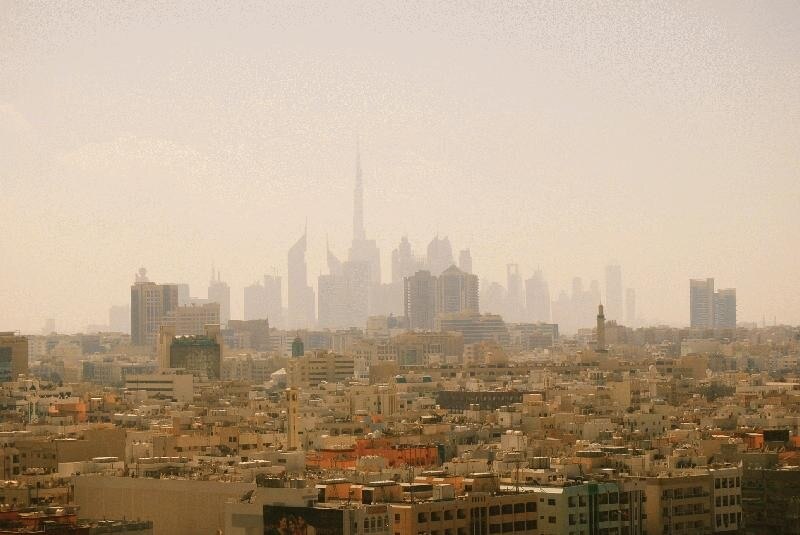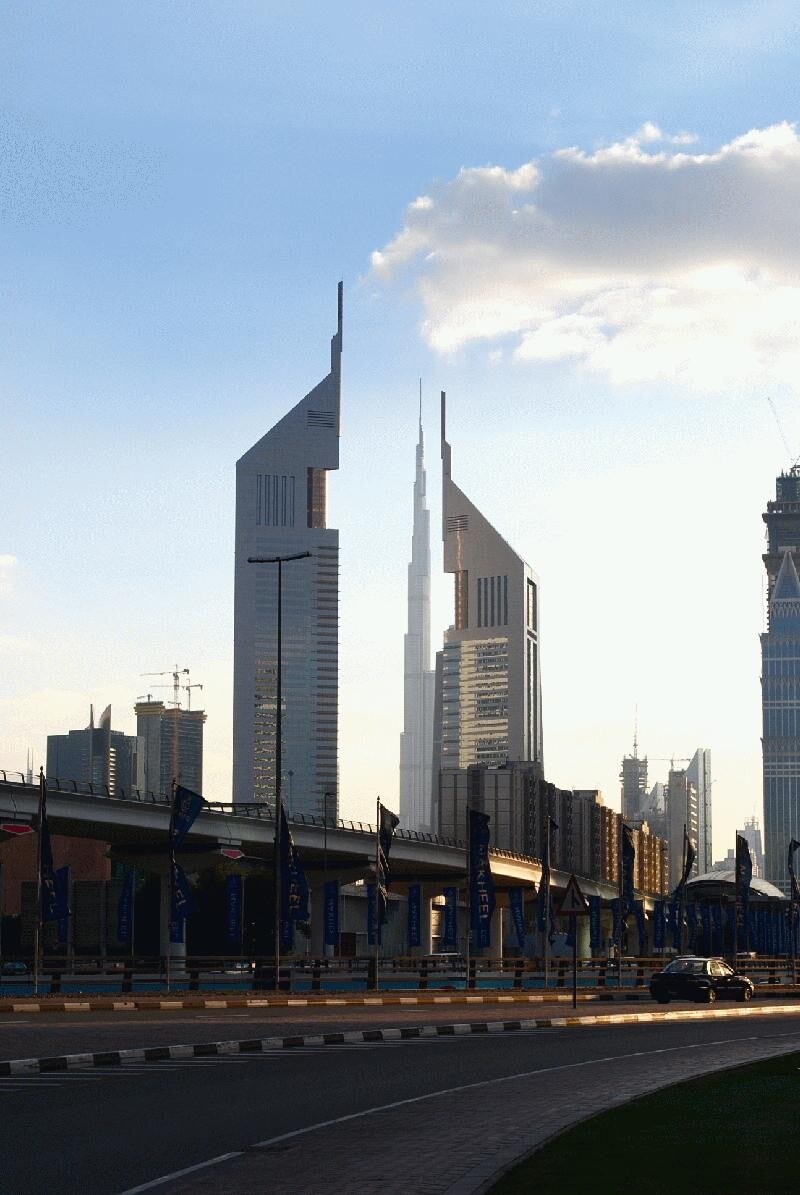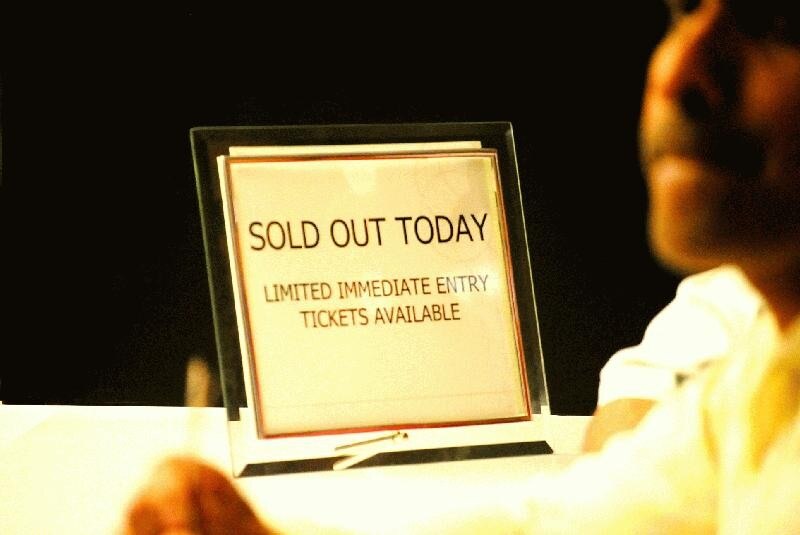As the city has quickly grown in both regional importance and urban extension, Dubai embarked in what Mike Davis termed a “frantic quest for hyperbole” that has symbolized its attempt to ascend to the Olympus of global cities.
Function is not the primary concern in a land of endless horizons and seemingly bottomless financial availability. Form is the prime focus of today’s architecture in Dubai, whose fundamental criterion is globality. Dubai, in this sense, has been deeply seduced by the so-called “Bilbao effect” and the potential of ‘wow-architecture’ of defining a city’s image in the eyes of foreign audiences. As the Burj Khalifa (or “Burj Dubai” as it is known to the popular media) opens, the world is reminded of Dubai’s ambitions.
Yet, the Emirati fixation with the iconic is not simply a whim of its multi-billionaire leaders, as many Western commentators have wrongly argued. Dubai is trying to be, in the worlds of Emirati development tycoon Mohammed Ali Alabbar, “New York in the making.” Iconicity is, in Dubai, a crucial pillar of the entrepreneurial narrative that seeks to assert the Sheikdom’s vibrant presence in world affairs. It is a testimony to the city’s dynamism and a proof of its attempt to become the central place of the Middle East and one of the top urban settlements of the globe.
However, icons don’t just sprawl out of the desert sands. The social process behind the emergence – and indeed establishment – of an icon is inevitably nested in a “logical conformism” (as Emile Durkheim once called it) among individuals who agree upon the meaning of a symbol. In order to create an icon that has significance (and consequently influence) over a widespread audience, one has to relate to the symbolic systems shared or understood by as many as possible in such audience – the ‘dominant’ culture of that group. To put it simply, the icon needs to be recognized as such, and ‘speak the language’ of those to whom it is targeted. If Dubai seeks to seduce the world to become a widely recognized ‘global city’ then it needs to speak the language of globalization. High-rises, shopping malls and state-of-the-art mobility hubs are – indeed – the most common representations of such global-speak. The embody modernity and progress, and illustrate power by evoking the successes of metropolises such as New York, London and Tokyo.
The best example of this symbolic quest is the construction of the spectacular Burj Khalifa: the tallest building in the world. Soared into the Emirate’s cityscape in little more than four years at the impressing pace of one floor every three days, with a height of 828 meters, the spire was already a dominant presence in the urban fabric before completion. This high-rise, whose final elevation was jealously kept secret by the firm that designed it – the American Skidmore, Owings and Merrill – until its inauguration on the 4th of January, is certainly reminiscent of The Mile High Illinois envisaged by Frank Lloyd Wright in 1956 for Chicago and never realized. It embodies that classic human fascination with towers, symbols of power and dominance that have occupied the urban imaginary for centuries. As the constructions evolved, this skyscraper has attracted interests from all around the world, with investors of all nationalities rushing to secure a spot in the new Emirati icon during a two-night frenzy in 2007. Office and habitable spaces then reached exorbitant prices between three and four thousand US dollars per square foot.
This high-rise symbolizes Dubai’s quest for uniqueness and primacy in the hierarchy of cities around the globe. In the context of this race, the building also shows concerted effort of all the key players of the Emirate: Sheik, local government, major stakeholders and transnational capitalist elites. To these latter Emaar – its constructor – has targeted the marketing of the Burj, which offers a multifunctional hub pinpointed on its Armani Hotel & Residence that will house 160 suites and 144 cutting-edge apartments. Moreover, the building is just the pinnacle of a much wider Emaar development know as “Downtown Burj Khalifa” that spreads over 500-odd acres of Dubai’s CBD, alongside Sheik Zayed Road, with an estimated US$ 40 billion capital investment. Of course, the development does not stop to the Burj in terms of world-class standards: the site houses, immediately below the tower the world’s largest shopping centre the already operating Dubai Mall, circled by a boulevard that in Emaar’s vision should rival with the Champs-Élysées in width, length and prestige. Adorned with a Guinness-record aquarium and an ice hockey rink three times thicker than those in the National Hockey League, the Mall boosts fountains, pools and paddles of all sorts. As the progressively dazzled shopper makes his way through the Mall towards the Burj, the top-ranking boutiques leave the center stage to another urban champion occupying much of the adjacent 30-acres lake– the Dubai Fountain. Designed to replicate and, needless to say, amplify the Bellagio Fountain of Las Vegas, this gigantic water spectacle is supposed to spray an average 22,000 gallons of water at 150 meters in height at any given moment, with multiple cycles of color-shape combinations.
The interesting aspect of the Burj is, however, not its disproportionate and inhuman dimension. Rather, it is the attempt to create a city within a city – an almost independent structure that demands little external plodding for its inhabitants. All of these developments are indicative of a worrying trend in the Emirate: as the city seeks to market its unique melting pot of cultures and nationalities as a catalyst for global expansion, its urbanism has turned into a demand-oriented planning that aims at creating comfort zones for all of its wealthy expatriate and short-term visitors. The city has thus embarked in an attempt to satisfy the many different appetites of very different global elites, ranging from those in search for extravaganza to those in need for anonymity and privacy. In this sense, the Emirate has avoided targeting any specific group, rather ‘going with the flow’ of the international jet-sets and putting up an almost unprecedented multifaceted offer: entire themed quarters are now burgeoning across the urban landscapes, from the Harvard co-sponsored medical village, to Dubailand (the world’s send-largest fun park, of course), to OMA’s plans for a Manhattan-style islet that was meant to replicate a block of the Big Apple, before being benched by the current crisis.
The iconic becomes, in this paradigmatic diversification policy, a trampoline for the wider world: it is the means by which Dubai seeks to persuade of its progress and its participation in the ‘international’ whilst also trying to seduce the global audience through the soft power of its symbols. Although Singapore is often referred to in Emirati planning circles as the meter of comparison, Dubai is not looking for a cosmopolitan melting pot. Rather, the Burj is nothing but one of the latest ingredients of an elitist ‘salad bowl’ where every state-of-the-art development is distinct, detached and potentially independent from all the others, and all is meant for the transient.
Yet there is a risk in this: as vertical cities sprawl upon Dubai’s landscape, less and less urbanity, in the neighborhood sense so popularly campaigned by Jane Jacobs, is left. As Nicholas Ouroussof put it on the pages of the New York Times, each iconic development runs the risk to become a “gated enclave, architecturally stupendous yet profoundly exclusionary.” Rather than becoming a vibrant and cosmopolitan hub for global mobility, Dubai might be on track towards mutating into a 21st century Las Vegas built of inward-oriented exclusive attractions that few can afford, void of any urban community, and much closer to a gigantic theme park than to the global cities of our present age. For instance, customers of the Burj al Arab hotel are already able to reach it directly from the airport via private, anonymous, air-conditioned shuttles that bypass the other suburbs and deposit them right in front of the super-exclusive lobby. Non-resident visitors, on the other hand, have to pay a 40 Dirham tax to enter the premises, and are constantly surveyed as they goofily move where access is granted. A similar fate (between 100 and 500 Dirham) awaits tourists at the entrance of “at the top” – the opening exposition of the Burj that takes visitors to the 124th panoramic floor of the tallest building in the world.
Dubai’s ruler, Sheik al Maktoum, straightforward summarized his endeavour in the 2007 CBS documentary Dubai Inc: his Emirate – underlined the monarch – has to be “number one in the world, in everything.” Whether it will achieve this, and most importantly recover from today’s troubling financial situation, might be a too complex question for the present volatile scenario. Yet, rest assured, Sheik Mo and his Emirate will seek to break other records beyond heights. Walking through Dubai’s abandoned construction sites, or even simply gazing at empty patches of terrain where record-breaking structures might never emerge, the scrupulous architect is today left to wonder whether this quest for iconicity and the rise of the vertical city will materialize into an unprecedented urban entity that defies every logic, or if much of these visions will remain nothing but a mirage of photoshopped renderings on the Emirate’s glossy brochure. Dubai might, at the end of the day, become iconic – even iconoclastic – but will it ever become a city?








